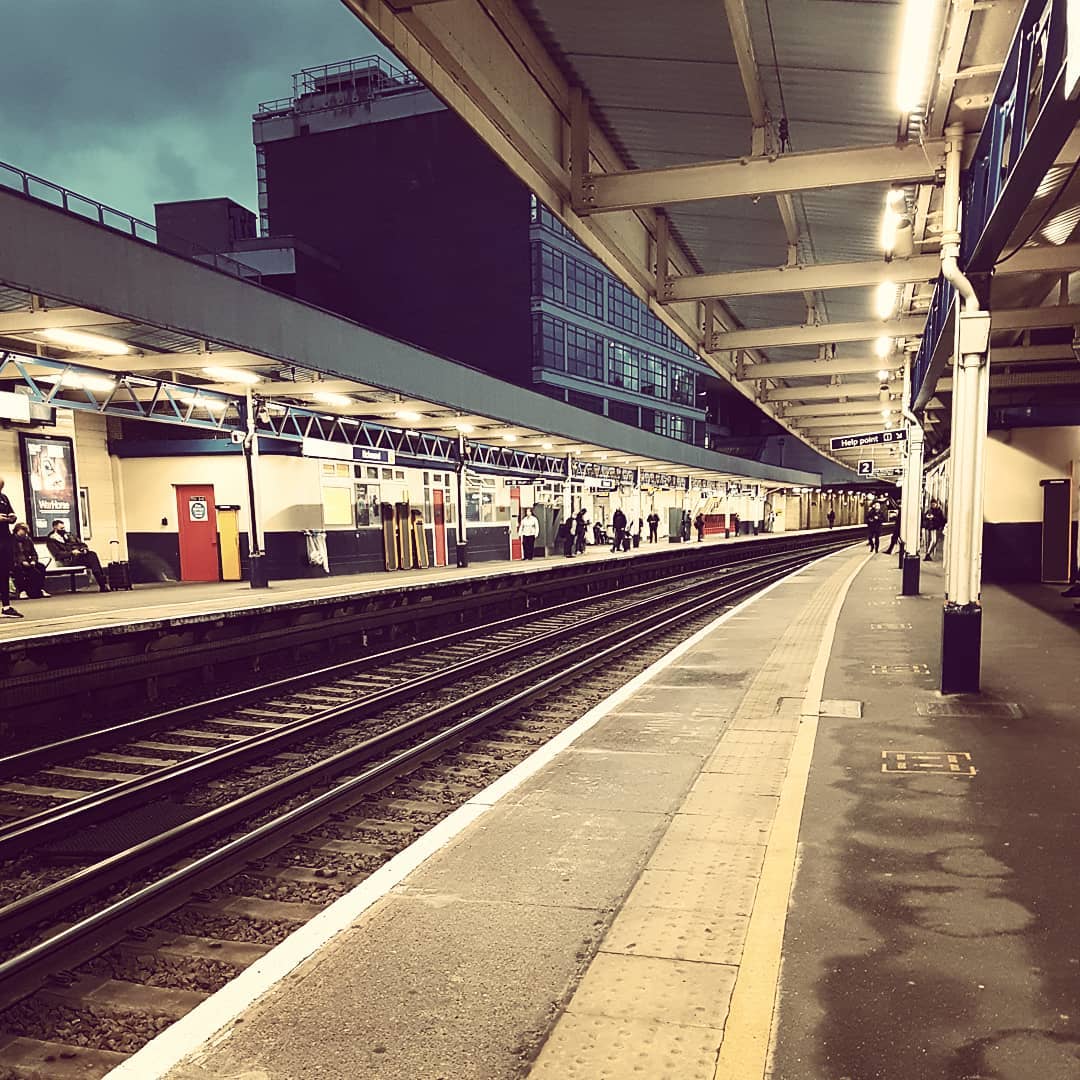Research in a Time of Coronavirus

Rush hour on the Northern Line, Overground, Richmond, after the second lockdown in November 2020 (photo credit: Jasmina Lijesevic).
After years of planning, Circuits of Practice, our AHRC grant funded research project into how museums formed computer narratives, officially began March 1, 2020. However, our excitement for this long-anticipated moment was soon tempered by the current global situation. By mid-March, global lockdowns in response to Covid-19 pandemic were in place, preventing travel and forcing all to work remotely from our homes.
For our academic research team, that meant three separate countries with three separate time zones. Professor Ross Parry, our co-I, was and remains in the UK. Our PI, Dr Simone Natale, was in Turin for a brief visit home to his family when Italy’s borders closed. Unable to the join the research team due to previous commitments until the end of April, I was still in the United States when the US international travel bans were issued. However, the research project consisted of more than just the three of us.
Circuits of Practice seeks to establish a system of collaboration between museum-based and university-based researchers. To accomplish this, we had partner with six UK museums and three international museums: Bletchley Park (Milton Keynes, UK); the Centre for Computing History (Cambridge, UK); Computer History Museum (Mountain View, California, USA); the Museo Nazionale Scienza e Tecnologia Leonardo da Vinci (Milan, Italy); National Museum of Computing (Milton Keynes, UK); the National Museum of Emerging Science and Innovation “Miraikan” (Tokyo, Japan); the National Science and Media Museum (Bradford, UK); the Science Museum (London, UK), and the Victoria & Albert Museum (London, UK). Now, the staff of those museums were forced to work remotely, unable to access their building and collections.
We were faced planning for a future that we had no way of predicting. After careful deliberation, we agreed that the project could continue with the original schedule, at least for the initial ‘preparatory phase’ from March until August. As this phase primarily was dedicated to infrastructure set-up and theoretical framework, it was even well suited to meetings via web conferencing tools. We were heartened and deeply grateful when, instead of stepping back as would only be natural with the larger concerns, our partners leaned into the project, offering their valuable insight and practical experience. Yet, despite this successful transition, we knew that it would be more difficult to adapt the workshops, site visits and symposium that were schedule for the fall and winter months. Over the summer, with the support and assistance of our museum partners, we were able to rework our fieldwork phase in ways that are now proving to be fruitful. We are excited to share our progress in future posts.
So, like the rest of the world, Circuits of Practice has collectively turned to our computers to connect us to each other. We laughed together when pets would decide to crash our meetings and commiserated with those plagued with internet issues. We have become a community. While we mourned the loss of meeting in person and the ability to walk through our museums’ exhibitions, we discovered there were some advantages to remote work. Our international partners, who, due to the cost and logistics of international travel, would mostly likely not have be able to attend any meetings until the final phase of the project, have had to opportunity to become more involved. The irony that our subject of study (computer technology) was now the very medium that allowed us to continue our study is not lost on us.
Now, as the pandemic to has entered its second wave, prompting a new set of restrictions and lockdown orders across the globe, we are beginning our field work and will share our journey with you through this blog. We still do not know what lies ahead, but we have faith in our project’s circuity.